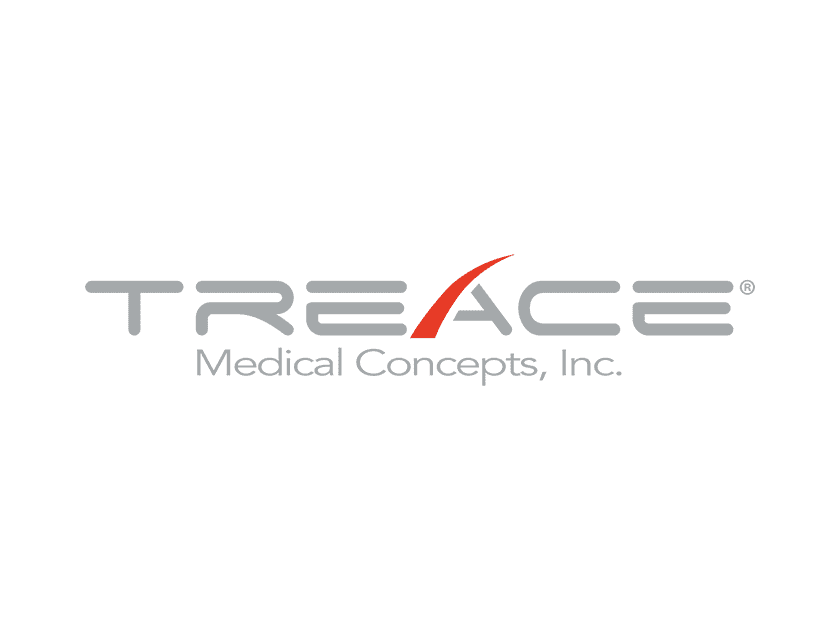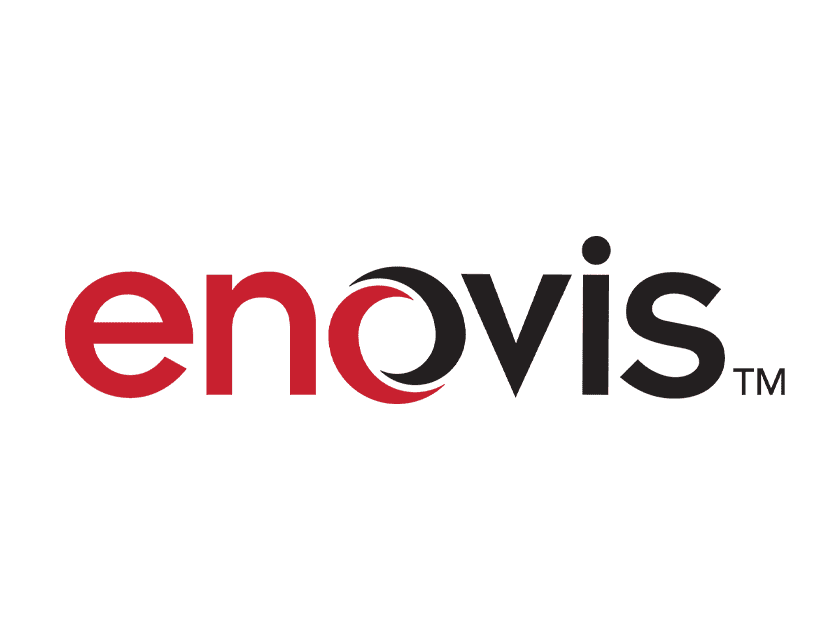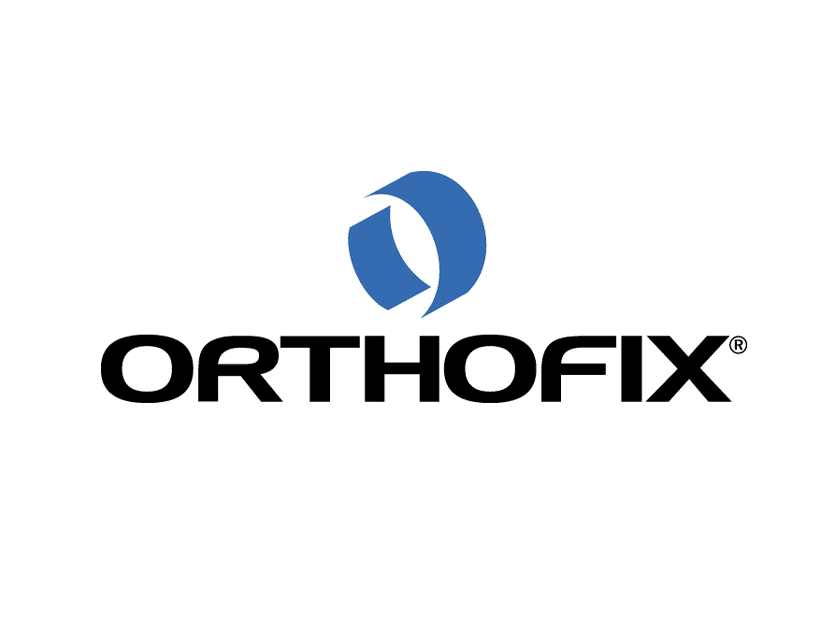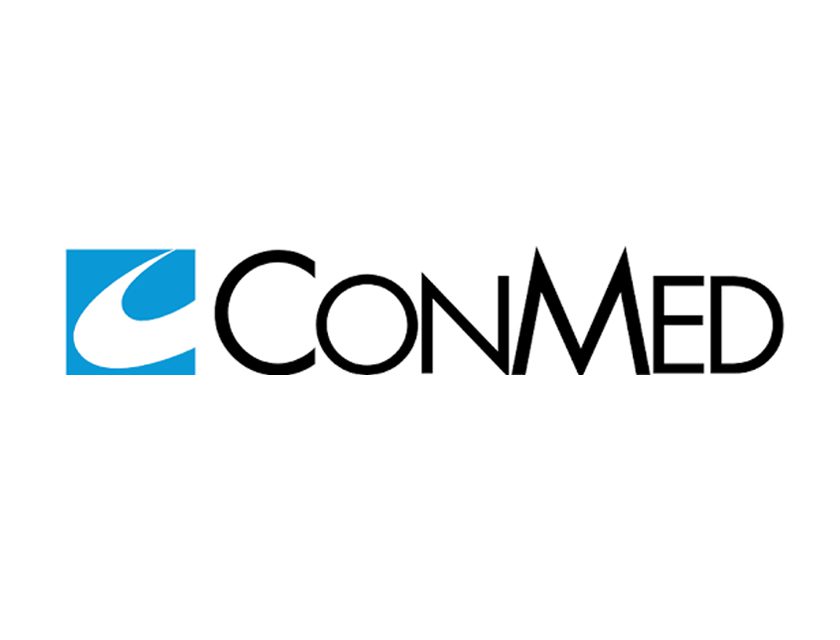

 Copy to clipboard
Copy to clipboard 
In 2024, spine sales surpassed $10.7 billion worldwide and accounted for 17% of the orthopedic market’s total revenue. Spine has highly favorable patient demographics, but the segment’s competitive dynamics are undergoing significant changes.
As the rate of innovation slows around commoditized implants, large companies are turning to digital technology ecosystems to improve spine surgery outcomes and defend highly valuable market share.
Below we’ll delve into what is shaping the spine market, its leading players, geographic trends, and our forecast for the next few years.
What is Shaping the Spine Market?
Enabling technology, consolidation, minimally invasive procedures and alternative sites of care are among the trends shaping the spine market.
A New Basis for Competition
Technology is altering the competitive dynamics in orthopedics. Just as Stryker changed the paradigm in joint replacement with its Mako robotic system, Medtronic and Globus Medical did the same in spine. Medtronic CEO Geoffrey Martha believes the very basis for competition is changing in spine due to enabling technology, and believes it will filter out competition.
“The basis of competition in the spine market is rapidly changing,” he said. “You saw yet another example [in January] when a major competitor decided to get out of the spine business. We’re causing this disruption. We’re causing this disruption with our arsenal of differentiated enabling technology. Surgeons have to make a choice and they’re standardizing with the company that can offer them a full complement of innovative technologies.”
Consolidation and Investment Focus
Just as spine is the largest segment by revenue, it also generates the most activity for both M&A and investments.
Spine accounts for 28% of all orthopedic merger and acquisition activity over the last ten years. Its true impact is greater than that when you factor in spine-related enabling technology and orthobiologics, which have accelerated since the pandemic. In recent years, major M&A moves have disrupted the spine market, and 2025 is no different. Early in the year, Stryker divested its spinal implant business to newly formed VB Spine.
Like M&A, 28% of orthopedic investments over the last decade have gone to spine companies. While funding volume has slowed, both generally and for spine, 2025 saw the IPO window crack open again for the first time in years. Carlsmed launched its IPO in July 2025 and is on track to achieve an estimated 70% growth this year.
The Future of Spine Surgery?
Minimally invasive procedures are likely the future of spine surgery. They produce better outcomes, reduce patient morbidity and are better suited to alternative sites of care. MIS procedures account for an estimated 20% to 30% of total spine cases in the United States. Companies outside of spine, like Arthrex, are increasingly applying their technologies to spine surgery.
“The feedback from the surgeon community has been overwhelmingly positive,” said Arthrex Global Director of Spine, Zak Kemp. “Surgeons familiar with Arthrex from their orthopedic training are excited about the unique potential we bring to the spine market, particularly with our ultra-minimally invasive and motion-preserving techniques. It has also been especially rewarding to introduce Arthrex to neurosurgeons who were previously unfamiliar with our company.”
An Inpatient Industry
While orthopedic procedures are moving to alternative sites of care, spine surgery is mostly performed at inpatient hospital settings because of procedural complexity, operating requirements and reimbursement dynamics. Inpatient reimbursement has been mostly flat, while outpatient rates have climbed steadily.
However, the remaining gap provides limited incentive to move to outpatient settings. There are some spine surgeries that have made meaningful inroads to the ASC, however, including lumbar fusion, simple cervical cases and decompressions.
Spine Market Leaders
At the end of 2024, the top five players in spine account for more than 62% of all sales in the market. Only the top two players have double-digit market share.
The Market Leader
For a time, there was a sense that Medtronic was too big to grow. As it turns out, scale wins in spine and no company can currently compete with Medtronic on that front. The company also showed that competition at the top of the market is all about the technology ecosystem. It is not enough to have a robot; you need to have a fully realized and differentiated suite of technologies. Medtronic also benefits from the market disruption happening in spine, as they collect tenured competitive sales reps from competitors.
A Credible Challenger
Conventional wisdom says large spine integrations just don’t work. However, Globus Medical was able to thread the needle with its bold acquisition of NuVasive. The company’s ace card may be its best-in-class technology, but it still needs more scale to get sufficient units placed in the field. Globus ran into operational challenges to start 2025 and saw elongated selling cycles for its enabling technology.
Another Share Donor Taps Out
Spine has been a headwind for the company for several years at J&J MedTech. Its Spine, Sports and Other category has a 10-year CAGR of -5% as it consistently loses share to competitors. Part of the issue has been poorly integrated M&A that led to a portfolio lacking focus. However, the company’s robotic platform re-energized its knee business and could ultimately do the same for spine. The company is spinning off its orthopedics business within the next two years, and the future of its spine business is cloudy.
Focusing on Core Strengths
Stryker had been trying to kickstart its spine business since its 2018 acquisition of K2M. Ultimately, Stryker decided to prioritize areas of strength where it is a market leader and divested its spinal implant business to newly formed VB Spine at the start of 2025. Interestingly, Stryker opted to keep its spine enabling technology in-house, and we’ll find out whether it can generate significant revenue over the next few years while paired with VB Spine’s implants.
The Next Billion Dollar Company
ATEC is firmly on the path to being the largest pure-play spine player in the industry, with projected revenue over $1 billion by 2027. ATEC has been the biggest beneficiary as some of the titans of the spine industry stumbled in recent years. The spine market traditionally rewards focus, and ATEC has attracted industry leaders and sales reps from competitors.
Notable Mid-Tier Players
There are plenty of interesting companies in the mid- and small tiers of the market, but we’ve picked three players who could capitalize on the changing landscape.
Privately-held Highridge Medical emerged out of Zimmer Biomet’s spine and dental spin-off to ZimVie, which ultimately sold its spine assets to Highridge. The company is led by industry veterans and operates as “spine’s largest start-up.” It spent a long time right-sizing the company and refocusing its portfolio, and has entered a number of strategic partnerships to bolster its offerings.
In the aftermath of its merger with SeaSpine, Orthofix brought on a completely new leadership team and sought to rewire its distributor relationships. The company has a unique portfolio that includes a wide array of spinal implants and orthobiologics and is armed with compelling technology in the 7D Flash Navigation system.
SI-BONE boasts a full complement of sacropelvic solutions and has access to an expansive total addressable market. SI-BONE has successfully driven surgeon engagement and more than doubled its surgeon user base since 2022.
Geographic Trends in Spine
The United States is the largest spine market, but there are compelling international opportunities. Internationally, we’re looking at disruption in Asia Pacific, the unprecedented impact of EU MDR and international cross-selling opportunities.
The spine market in China and other areas of the Asia Pacific region has been under pressure for the last several years due to volume-based procurement in China that drastically reduced prices, as well as labor strikes and other macroeconomic issues. However, 60% of the world’s patients live in that area. Regardless of the current landscape, companies with global aspirations have to be there.
The EU MDR remains a major expense and barrier to entry for companies. Stryker CEO Kevin Lobo called EU MDR a “real challenge for the entire industry” and noted that, in some cases, products are being approved in Japan before Europe, a scenario virtually unheard of before the emergence of MDR.
Finally, spine companies are increasingly seeking opportunities outside the United States. Globus Medical’s acquisition of NuVasive opened the door to cross-selling opportunities that the company called “virtually untapped.” ATEC, on the other hand, is dipping its toes back into international markets that it believes could be profitable and could use the company’s flagship products.
Market Forecast
According to our estimates, the spine segment generated $10.8 billion in sales in 2024 and will grow to $12.3 billion in worldwide sales by 2028. Below we look at both the headwinds and tailwinds driving spine’s long-term outlook.
Industry Headwinds
Inflationary Pressure. An ongoing global trade war could increase costs for consumers. The pandemic clearly showed that patients are more than willing to defer their surgeries, potentially for years at a time.
Pricing Pressure. The orthopedic market has dealt with price declines for nearly two decades. Contracting dynamics make it difficult for companies to offset these losses.
Consolidation. Spine lacks the robust, diverse ecology seen in some other markets. Two companies account for nearly half of all spine sales, while having a virtual stranglehold on spine enabling tech. This dynamic could limit choice and innovation.
Industry Tailwinds
Demand for Care. The number of people aged 60 or older will double between 2020 and 2050. Back pain affects one in 10 people globally and is the primary cause of disability in the U.S., costing $560 billion.
Healthcare Consumerism. Patients are increasingly involved and informed in their healthcare decisions. Telehealth, alternative sites of care and work-from-home arrangements increase flexibility and could lead more patients to seek care.
Quality of Care. Outcomes-focused care combined with emergence of enabling technology will drive significant investment in spine for the foreseeable future.
Wrap Up
Spine has had a tumultuous few years as the competitive landscape consolidates and evolves. While recent moves from Stryker and J&J MedTech will prolong disruption in the industry, we expect that technology and procedural innovation will continue to drive profound interest and investment in spine.
In 2024, spine sales surpassed $10.7 billion worldwide and accounted for 17% of the orthopedic market’s total revenue. Spine has highly favorable patient demographics, but the segment’s competitive dynamics are undergoing significant changes.
As the rate of innovation slows around commoditized implants, large companies are turning to...
In 2024, spine sales surpassed $10.7 billion worldwide and accounted for 17% of the orthopedic market’s total revenue. Spine has highly favorable patient demographics, but the segment’s competitive dynamics are undergoing significant changes.
As the rate of innovation slows around commoditized implants, large companies are turning to digital technology ecosystems to improve spine surgery outcomes and defend highly valuable market share.
Below we’ll delve into what is shaping the spine market, its leading players, geographic trends, and our forecast for the next few years.
What is Shaping the Spine Market?
Enabling technology, consolidation, minimally invasive procedures and alternative sites of care are among the trends shaping the spine market.
A New Basis for Competition
Technology is altering the competitive dynamics in orthopedics. Just as Stryker changed the paradigm in joint replacement with its Mako robotic system, Medtronic and Globus Medical did the same in spine. Medtronic CEO Geoffrey Martha believes the very basis for competition is changing in spine due to enabling technology, and believes it will filter out competition.
“The basis of competition in the spine market is rapidly changing,” he said. “You saw yet another example [in January] when a major competitor decided to get out of the spine business. We’re causing this disruption. We’re causing this disruption with our arsenal of differentiated enabling technology. Surgeons have to make a choice and they’re standardizing with the company that can offer them a full complement of innovative technologies.”
Consolidation and Investment Focus
Just as spine is the largest segment by revenue, it also generates the most activity for both M&A and investments.
Spine accounts for 28% of all orthopedic merger and acquisition activity over the last ten years. Its true impact is greater than that when you factor in spine-related enabling technology and orthobiologics, which have accelerated since the pandemic. In recent years, major M&A moves have disrupted the spine market, and 2025 is no different. Early in the year, Stryker divested its spinal implant business to newly formed VB Spine.
Like M&A, 28% of orthopedic investments over the last decade have gone to spine companies. While funding volume has slowed, both generally and for spine, 2025 saw the IPO window crack open again for the first time in years. Carlsmed launched its IPO in July 2025 and is on track to achieve an estimated 70% growth this year.
The Future of Spine Surgery?
Minimally invasive procedures are likely the future of spine surgery. They produce better outcomes, reduce patient morbidity and are better suited to alternative sites of care. MIS procedures account for an estimated 20% to 30% of total spine cases in the United States. Companies outside of spine, like Arthrex, are increasingly applying their technologies to spine surgery.
“The feedback from the surgeon community has been overwhelmingly positive,” said Arthrex Global Director of Spine, Zak Kemp. “Surgeons familiar with Arthrex from their orthopedic training are excited about the unique potential we bring to the spine market, particularly with our ultra-minimally invasive and motion-preserving techniques. It has also been especially rewarding to introduce Arthrex to neurosurgeons who were previously unfamiliar with our company.”
An Inpatient Industry
While orthopedic procedures are moving to alternative sites of care, spine surgery is mostly performed at inpatient hospital settings because of procedural complexity, operating requirements and reimbursement dynamics. Inpatient reimbursement has been mostly flat, while outpatient rates have climbed steadily.
However, the remaining gap provides limited incentive to move to outpatient settings. There are some spine surgeries that have made meaningful inroads to the ASC, however, including lumbar fusion, simple cervical cases and decompressions.
Spine Market Leaders
At the end of 2024, the top five players in spine account for more than 62% of all sales in the market. Only the top two players have double-digit market share.
The Market Leader
For a time, there was a sense that Medtronic was too big to grow. As it turns out, scale wins in spine and no company can currently compete with Medtronic on that front. The company also showed that competition at the top of the market is all about the technology ecosystem. It is not enough to have a robot; you need to have a fully realized and differentiated suite of technologies. Medtronic also benefits from the market disruption happening in spine, as they collect tenured competitive sales reps from competitors.
A Credible Challenger
Conventional wisdom says large spine integrations just don’t work. However, Globus Medical was able to thread the needle with its bold acquisition of NuVasive. The company’s ace card may be its best-in-class technology, but it still needs more scale to get sufficient units placed in the field. Globus ran into operational challenges to start 2025 and saw elongated selling cycles for its enabling technology.
Another Share Donor Taps Out
Spine has been a headwind for the company for several years at J&J MedTech. Its Spine, Sports and Other category has a 10-year CAGR of -5% as it consistently loses share to competitors. Part of the issue has been poorly integrated M&A that led to a portfolio lacking focus. However, the company’s robotic platform re-energized its knee business and could ultimately do the same for spine. The company is spinning off its orthopedics business within the next two years, and the future of its spine business is cloudy.
Focusing on Core Strengths
Stryker had been trying to kickstart its spine business since its 2018 acquisition of K2M. Ultimately, Stryker decided to prioritize areas of strength where it is a market leader and divested its spinal implant business to newly formed VB Spine at the start of 2025. Interestingly, Stryker opted to keep its spine enabling technology in-house, and we’ll find out whether it can generate significant revenue over the next few years while paired with VB Spine’s implants.
The Next Billion Dollar Company
ATEC is firmly on the path to being the largest pure-play spine player in the industry, with projected revenue over $1 billion by 2027. ATEC has been the biggest beneficiary as some of the titans of the spine industry stumbled in recent years. The spine market traditionally rewards focus, and ATEC has attracted industry leaders and sales reps from competitors.
Notable Mid-Tier Players
There are plenty of interesting companies in the mid- and small tiers of the market, but we’ve picked three players who could capitalize on the changing landscape.
Privately-held Highridge Medical emerged out of Zimmer Biomet’s spine and dental spin-off to ZimVie, which ultimately sold its spine assets to Highridge. The company is led by industry veterans and operates as “spine’s largest start-up.” It spent a long time right-sizing the company and refocusing its portfolio, and has entered a number of strategic partnerships to bolster its offerings.
In the aftermath of its merger with SeaSpine, Orthofix brought on a completely new leadership team and sought to rewire its distributor relationships. The company has a unique portfolio that includes a wide array of spinal implants and orthobiologics and is armed with compelling technology in the 7D Flash Navigation system.
SI-BONE boasts a full complement of sacropelvic solutions and has access to an expansive total addressable market. SI-BONE has successfully driven surgeon engagement and more than doubled its surgeon user base since 2022.
Geographic Trends in Spine
The United States is the largest spine market, but there are compelling international opportunities. Internationally, we’re looking at disruption in Asia Pacific, the unprecedented impact of EU MDR and international cross-selling opportunities.
The spine market in China and other areas of the Asia Pacific region has been under pressure for the last several years due to volume-based procurement in China that drastically reduced prices, as well as labor strikes and other macroeconomic issues. However, 60% of the world’s patients live in that area. Regardless of the current landscape, companies with global aspirations have to be there.
The EU MDR remains a major expense and barrier to entry for companies. Stryker CEO Kevin Lobo called EU MDR a “real challenge for the entire industry” and noted that, in some cases, products are being approved in Japan before Europe, a scenario virtually unheard of before the emergence of MDR.
Finally, spine companies are increasingly seeking opportunities outside the United States. Globus Medical’s acquisition of NuVasive opened the door to cross-selling opportunities that the company called “virtually untapped.” ATEC, on the other hand, is dipping its toes back into international markets that it believes could be profitable and could use the company’s flagship products.
Market Forecast
According to our estimates, the spine segment generated $10.8 billion in sales in 2024 and will grow to $12.3 billion in worldwide sales by 2028. Below we look at both the headwinds and tailwinds driving spine’s long-term outlook.
Industry Headwinds
Inflationary Pressure. An ongoing global trade war could increase costs for consumers. The pandemic clearly showed that patients are more than willing to defer their surgeries, potentially for years at a time.
Pricing Pressure. The orthopedic market has dealt with price declines for nearly two decades. Contracting dynamics make it difficult for companies to offset these losses.
Consolidation. Spine lacks the robust, diverse ecology seen in some other markets. Two companies account for nearly half of all spine sales, while having a virtual stranglehold on spine enabling tech. This dynamic could limit choice and innovation.
Industry Tailwinds
Demand for Care. The number of people aged 60 or older will double between 2020 and 2050. Back pain affects one in 10 people globally and is the primary cause of disability in the U.S., costing $560 billion.
Healthcare Consumerism. Patients are increasingly involved and informed in their healthcare decisions. Telehealth, alternative sites of care and work-from-home arrangements increase flexibility and could lead more patients to seek care.
Quality of Care. Outcomes-focused care combined with emergence of enabling technology will drive significant investment in spine for the foreseeable future.
Wrap Up
Spine has had a tumultuous few years as the competitive landscape consolidates and evolves. While recent moves from Stryker and J&J MedTech will prolong disruption in the industry, we expect that technology and procedural innovation will continue to drive profound interest and investment in spine.

You’ve reached your limit.
We’re glad you’re finding value in our content — and we’d love for you to keep going.
Subscribe now for unlimited access to orthopedic business intelligence.
ME
Mike Evers is a Senior Market Analyst and writer with over 15 years of experience in the medical industry, spanning cardiac rhythm management, ER coding and billing, and orthopedics. He joined ORTHOWORLD in 2018, where he provides market analysis and editorial coverage.







